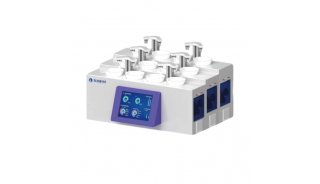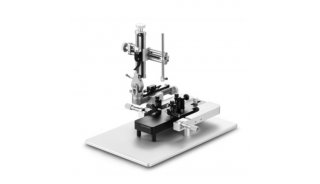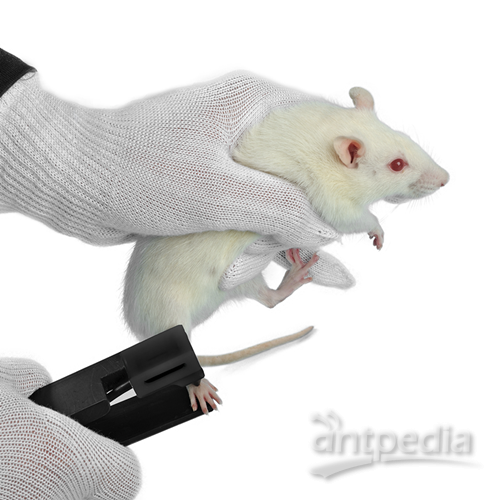GST Activity Fluorometric Assay
实验概要
The experiment provides a simple, fluorescence-based in vitro assay for detecting the GST activity using a fluorescence plate reader. The assay utilizes monochlorobimane (MCB), a dye that reacts with glutathione. The free form of MCB is almost nonfluorescent, whereas the dye fluoresces blue (ex/em = 380/461 nm) when it reacts with glutathione. GST catalizes the MCB-glutathione reactions and the fluorescence levels are proportionally to the amounts of GST presence in the reaction. Thus, the GST level in samples can be easily detected using a fluorometer or a 96-well fluorometric plate reader. The kit can detect GST activity in crude cell lysate or purified protein fraction, and also quantitate GST-tagged fusion protein.
实验原理
Glutathione S-transferase (GST) is a family of enzymes that play an important role in detoxification of xenobiotics. GST catalyzes the formation of the thiol group of glutathione to electrophilic xenobiotics. It utilizes glutathione to scavenge potentially toxic compounds including those produced as a result of oxidative stress and is part of the defense mechanism against the mutagenic, carcinogenic and toxic effects of such compounds. Based on their biochemical, immunological, and structural properties, the soluble human GSTs are categorized into 4 main classes: alpha, mu, pi, and theta.
主要试剂
Glutathione [Details:lyophilized]
GST Assay Buffer
GST Sample Buffer
GST Standard (20 mU/µl)
MCB Substrate
实验材料
Cell Tissue Plasma and Erythrocyte
实验步骤
1. REAGENT PREPARATION:
Glutathione: Add 550 µl of GST Sample Buffer to each vial just before use (200 mM). One vial is sufficient for 50 assays. Remaining solution can be kept at –20oC for 1 week.
2. SAMPLE PREPARATION GUIDELINE:
1) Cell Sample Preparation:
i) Collect cells by centrifugation. For adherent cells, use a rubber policeman scrapping the cells to collect.
ii)Homogenize or sonicate the cells in Sample Buffer.
iii) Centrifuge 10,000 x g for 15 minutes at 4oC.
iv) Collect supernatant and use for the assay. The remaining sample should be stored at –80oC, stable for at least 1 month.
2) Tissue Sample Preparation:
i) Prior to dissection, perfuse tissue with PBS containing heparin (0.15 mg/ml) to remove red blood cells and clots.
ii)Homogenize tissue in Sample Buffer (100 mg/0.5 ml).
iii) Centrifuge at 10,000 x g for 15 minutes at 4oC.
iv) Collect supernatant and use for the assay. The remaining sample should be stored at –80oC, stable for at least 1 month.
3) Plasma and Erythrocyte Sample Preparation :
i) Centrifuge an anticoagulant treated blood at 1000 x g for 10 min at 4oC.
ii)Transfer the top plasma layer (without disturbing the white buffy layer) to a new tube and store on ice for assay or store at –80oC for future use. The plasma should be stable for 1 month.
iii) Remove the white buffy layer and discard (leukocytes).
iv) Lyse the erythrocytes (red blood cells) in 4 times its volume of ice-cold GST sample Buffer.
v) Centrifuge at 10,000 x g for 15 min at 4oC.
vi) Transfer supernatant (erythrocyte lysate) to a new tube, and use it for the GST assay. The remaining samples should be stored at –80oC for future use, stable for at least one month.
3. GST ASSAY PROTOCOL:
1) Prepare samples in a total of 100 µl volume with GST Sample Buffer, including a negative control with 100 µl of GST Sample Buffer alone and a positive control with 2 µl of GST and 98 µl of Sample Buffer.
Note: We recommend preparing several dilutions of your sample and perform duplicate wells for each measurement.
2) Add 10 µl of Glutathione to each well containing the sample and control above.
3) Prepare Substrate Mix by adding 2 µl MCB Solution 98 µl of GST Assay Buffer for each sample and standard assayed. Mix well and transfer 100 µl of the Mix into each sample and control well.
4) Carefully shake the plate to start the reaction.
5) Read samples at Ex./Em. 380/460 nm at various time points within 1 hour using a plate reader. At least 5 time points should be collected for kinetic studies. For general comparison, read sample in 0.5-1 hour to compare the fluorescence level of treated vs. control samples.
6) GST Activity can be expressed as RFU/min/mg protein. Alternatively, you may use the standard calibration curve to determine the GST activity in your samples.




















